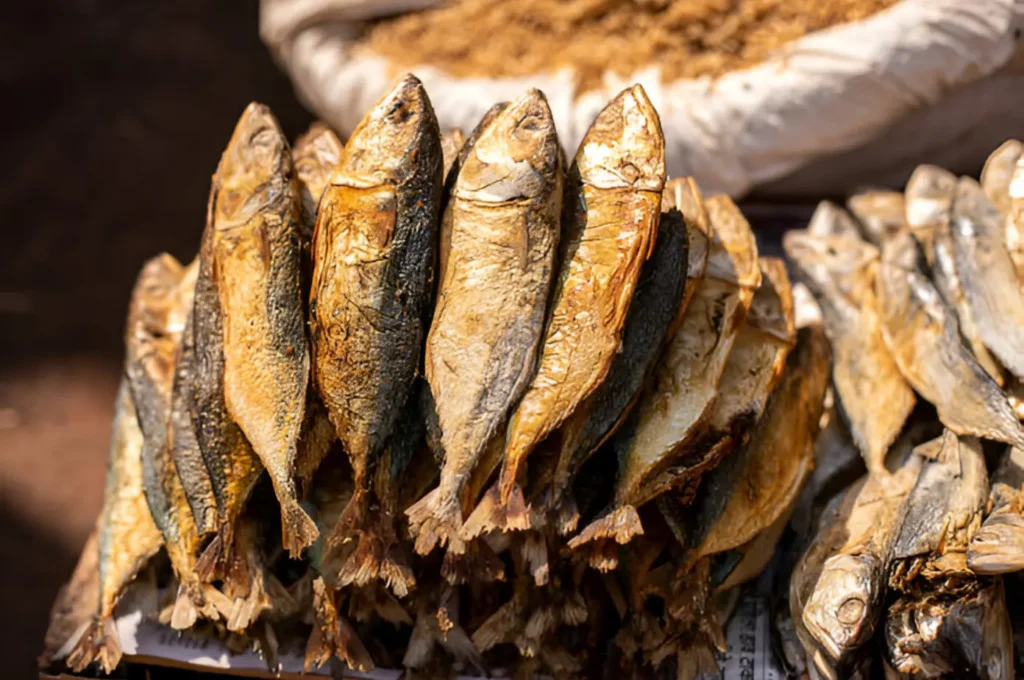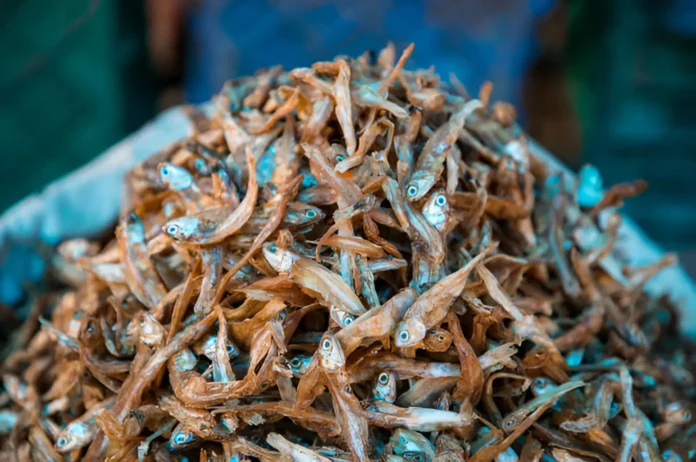Drying fish is a traditional method of preserving seafood that many cultures have practiced for centuries worldwide. By removing moisture from the fish, you can store it for long periods without spoiling, making it an important food source in many communities. In this blog, we will explore the benefits and drawbacks of dried fish, along with tips on how to incorporate it into your diet.
What is Dried Fish?
You can make dried fish by dehydrating fresh fish to remove most of its water content. This process can be done through several methods, including:
- Sun Drying: Lay out fish in the sun to dry naturally, often with added salt to enhance preservation.
- Smoking: Dry fish over a fire or in a smoker, which also imparts a distinct smoky flavor.
- Electric Drying: Use electric dehydrators to quickly and efficiently remove moisture.
These methods extend the shelf life of the fish and enhance its flavor, making it a popular ingredient in many traditional dishes.
Benefits of Dried Fish
Dried fish offers numerous benefits that make it a valuable addition to your diet:
1. Nutrient-Rich
This preserved seafood is packed with essential nutrients, including:
- Protein: It provides an excellent source of high-quality protein, which is essential for building and repairing tissues.
- Vitamins: Dried fish contains vitamins such as B12, which support nerve function and the production of red blood cells.
- Minerals: It is rich in calcium, phosphorus, and iron, contributing to bone health and oxygen transport in the body.
2. Long Shelf Life
One of the primary advantages of drying fish is its extended shelf life. By removing moisture, you inhibit the growth of bacteria and other microorganisms, allowing you to store it for months or even years in the right conditions.
3. Cost-Effective
Dried fish can be more cost-effective than fresh fish, especially in regions where access to fresh seafood is limited. The preservation process allows for bulk storage, reducing waste and the need for frequent purchases.
4. Enhanced Flavor
The drying process often concentrates the flavors of the fish, resulting in a more intense taste. This makes dehydrated seafood a popular ingredient for adding depth to soups, stews, and sauces.
5. Versatile Culinary Use
You can use fish jerky in a wide range of dishes across various cuisines. Rehydrate and cook it as a main ingredient, or use it as a seasoning or garnish to enhance the flavor of a dish.
Drawbacks of Dried Fish
Despite its many benefits, you should consider some potential drawbacks when consuming dried fish:
1. High Sodium Content
Salt often aids in the drying process to aid preservation, resulting in high sodium levels. Consuming too much sodium can lead to health issues such as high blood pressure and heart disease. Be mindful of portion sizes and choose low-sodium options when available.
2. Risk of Contaminants
In some regions, fish preserved through drying may be exposed to environmental contaminants or improper handling, leading to health risks. It is essential to source dry fish from reputable suppliers and ensure proper processing and storage.
3. Strong Odor
The drying process can result in a strong odor that some people may find off-putting. This is particularly true for fish that has been sun-dried or fermented. Proper ventilation and storage can help mitigate this issue.
4. Potential Allergens
Fish is a common allergen, and individuals with fish allergies should avoid dehydrated seafood products. Read labels carefully and consult a healthcare professional if you have concerns about food allergies.
How to Incorporate Dried Fish into Your Diet

Dried fish can be a delicious and nutritious addition to your diet when consumed in moderation. Here are some tips on how to incorporate it into your meals:
1. Choose the Right Type
There are many types of dried fish available, each with its unique flavor and texture. Some popular varieties include:
- Dried Anchovies: Often used in Asian cuisines, they add umami flavor to soups and stews.
- Dried Cod: Commonly used in Mediterranean dishes, you can rehydrate it and cook it with vegetables and spices.
- Dried Sardines: These small fish are often eaten whole and make a great snack or topping for salads.
2. Rehydrate Before Cooking
Before using fish jerky in a recipe, you should rehydrate it by soaking it in water for a few hours or overnight. This helps soften the fish and reduce its saltiness.
3. Pair with Complementary Ingredients
Dried fish pairs well with a variety of ingredients, including:
- Vegetables: Add it to stir-fries or stews with vegetables for a balanced meal.
- Spices: Use spices like garlic, ginger, and chili to enhance the flavor of dried fish dishes.
- Grains: Serve this preserved seafood with rice or quinoa for a complete and satisfying meal.
4. Experiment with Different Cuisines
You can find dry fish in many global cuisines, offering endless opportunities for culinary exploration. Try incorporating it into dishes from different cultures, such as:
- Asian: Add fish jerky to ramen or miso soup for a rich umami flavor.
- African: Use dehydrated seafood in a spicy tomato-based stew with vegetables and spices.
- Mediterranean: Rehydrate dried cod and cook it with olives, tomatoes, and herbs.
Tips for Buying and Storing Dried Fish
To ensure the best quality and flavor, follow these tips when purchasing and storing dried fish:
1. Choose Reputable Suppliers
Purchase dried fish from reputable suppliers or stores to ensure proper processing and storage. Look for products that are free from additives or artificial preservatives.
2. Check for Freshness
When buying dried fish, check for signs of freshness, such as a firm texture and a pleasant aroma. Avoid products that appear discolored or have a strong, unpleasant odor.
3. Store Properly
To maintain the quality of dried fish, store it in an airtight container in a cool, dry place. If you have access to a vacuum sealer, use it to extend the shelf life further. For long-term storage, consider refrigerating or freezing the fish jerky.
Conclusion
Dried fish is a versatile and nutrient-rich food that people worldwide have enjoyed for centuries. While it offers many benefits, such as long shelf life and enhanced flavor, be mindful of potential drawbacks, including high sodium content and the risk of contaminants. By choosing high-quality products and incorporating dry fish into your diet in moderation, you can enjoy its unique taste and nutritional benefits.
Whether you’re exploring new culinary traditions or looking for ways to add variety to your meals, dried fish is a delicious and nutritious option that you can enjoy in countless ways. Experiment with different types and recipes to discover the flavors and benefits of this time-honored food.
Have you tried incorporating dried fish into your diet? What are your thoughts on its benefits and drawbacks? We’d love to hear your opinions and experiences! Please leave a review or comment below to share your feedback.



